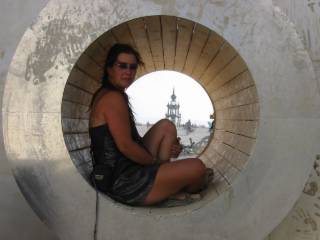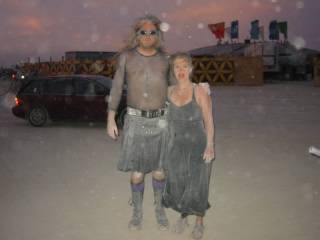Just another day in the lab
Anne-Marie and I performed the 'speed of light' calculation using Ghirardelli semi-sweet chocolate chips in our microwave. We placed a line of chocolate chips on a paper plate, then placed the plate in the center of the microwave with the line parallel to the door. We then heated the chips until the first sign of melting occured, and measured the distance between the melted points. Here are our results:
We looked up the speed of light in a vacuum, which was listed as 299,792,458 meters per second. Given that an error of plus-or-minus one chocolate chip results in variations of plus-or-minus 50,000,000 meters per second and that the inside of the microwave wasn't a vacuum, these results look better than they really are... there's only 1 significant digit in the final result, which should be more accurately represented as 3x108 m/s. Still, the fact that you can even get that close to measuring the fastest thing in the universe using kitchenware has a sort of arcane Douglas Adams feel to it.
f = microwave frequency = 2.48 gigahertz
L = measured chocolate melting point distance = 6 centimeters
d = full wavelength = 2 * L = 12 centimeters
t = period of one wave = 1 / f = 0.4032 nanoseconds
c = speed of light in a microwave = d / t = 297,600,000 meters per second
We looked up the speed of light in a vacuum, which was listed as 299,792,458 meters per second. Given that an error of plus-or-minus one chocolate chip results in variations of plus-or-minus 50,000,000 meters per second and that the inside of the microwave wasn't a vacuum, these results look better than they really are... there's only 1 significant digit in the final result, which should be more accurately represented as 3x108 m/s. Still, the fact that you can even get that close to measuring the fastest thing in the universe using kitchenware has a sort of arcane Douglas Adams feel to it.



